20 Most Famous Caravaggio Paintings in 2025
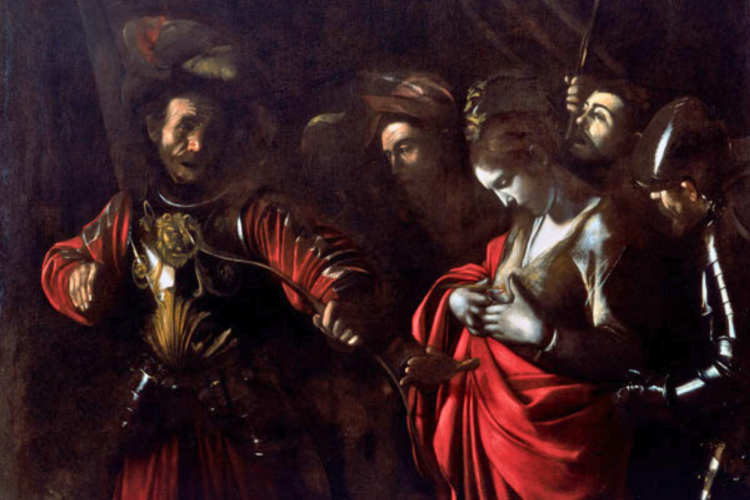
It's hard not to see why the most famous Caravaggio paintings are popular. The Italian artist would mix elements of the sacred and the profane, guiding the viewers' experience with his dark, moody palette, somber coloring and revolutionary painting techniques. His departure from the Renaissance paintings of Leonardo da Vinci led him to focus on capturing humans as they were, flaws and all, according to the Art Institute of Chicago.
He also gained notoriety beyond the canvas as one of the most troubled famous painters of our time, with his actions involving temper, murder and exile. Intrigued? Follow our guide to the top Caravaggio paintings and explore this troubled artist's life.
Jump to Section
- Who Was Caravaggio?
- Why is Caravaggio so popular?
- What is considered Caravaggio's best painting?
- Where can I see Caravaggio paintings in the US?
- 19 Top Caravaggio Paintings
Who Was Caravaggio?

Michelangelo Merisi da Caravaggio was born in 1571 in the village of Caravaggio, Lombardy, which is near Milan. While we know this famous artist as simply "Caravaggio," that is not his given name. Rather, “da Caravaggio” refers to where he was born. The name, Michelangelo, was most likely a reference to his birthday, which was on the feast day of the Archangel Michael (September 29). He was the first child of Fermo Merisi and his second wife, Lucia Aratori.
During his lifetime, Caravaggio was most likely called by his full name. However, to avoid confusing Caravaggio paintings with the famous Renaissance painter Michelangelo, art scholars have almost always referred to him by his nickname.
What was Caravaggio’s life like?

Caravaggio’s family was not incredibly wealthy, but they had strong connections to some of the leading families of the day. One of these families, the Colonna family, would become Caravaggio’s patrons and supporters, even when his actions were controversial.
In 1567, when Caravaggio was just five years old, the plague broke out in northern Italy, and by 1577 Caravaggio’s father, an architect for the Marchese of Caravaggio, and mother had both passed on from the disease.
When Caravaggio was a young teen, he was apprenticed for four years to Lombard painter, Simone Peterzano. Caravaggio decided to venture to Milan after his apprenticeship ended, eventually moving to Rome. There are many rumors about his life between 1588 and 1592, but no one knows for sure where Caravaggio was living or what he was doing.
We do know that in 1592 he had officially moved to Rome without much money and began working in a famous workshop run by Mannerist artist Giuseppe Cesari, mostly painting fruit and flowers.
Between 1592 and 1606, Caravaggio worked in Rome, creating religious paintings and other works that showcased his signature style. He was commissioned by powerful church officials to create works of art that can still be seen today in Rome. Throughout this time, rumors continued to fly about his behavior, which is sometimes reflected in the most famous Caravaggio paintings. Finally, in 1606, things took a turn for the worse.
What did Caravaggio do that was controversial?

Why did Caravaggio become an outcast? He was known for constantly getting into brawls, not only with his art peers, but with police and other authorities. On May 29, 1606, Caravaggio's fiery temperament led to a brawl over a tennis match (so the rumor goes), in which he eventually murdered a young man (some say his rival) named Ranuccio Tomassoni. There are several different possible motives for his actions, including the rivalry and a game of tennis gone wrong, but we can’t be sure why he committed this crime. Unfortunately, even Caravaggio’s most powerful patrons couldn’t help him out of this. Caravaggio was forced to flee and live in exile in Sicily.
During this time of his exile, many more Caravaggio paintings were created. He also joined the Knights of Malta, a Catholic lay religious order, which unfortunately led to more legal troubles for the already turbulent painter. The Knights of Malta were founded in the 11th century to bring aid to sick and injured religious pilgrims, but Caravaggio and some of his Knights of Malta companions got in trouble with the law after breaking into the home of a prominent man. He was arrested and spent some time in jail before escaping and fleeing, once again, to Naples.
A major influence on both his life and his career was his maternal connections to the Sforza and Colonna families. His maternal grandfather, Giovan Giacomo Aratori, was a land surveyor and agent for the Sforza. Another connection was Aratori’s daughter, Margarita, who was a wet nurse for Francesco Sforza I and Costanza Colonna's children. This set Caravaggio and his family up with major connections to powerful Italian dynasties. In fact, Costanza Colonna was the one who sheltered Caravaggio and helped with his escape to Naples. Colonna's son, Fabrizio Sforza Colonna, a Knight of Malta, later assisted Caravaggio's relocation to Malta in 1607. These alliances offered Caravaggio protection and patronage, helping him to continue creating the most renowned Caravaggio paintings, even though he was suffering from legal troubles.

In Naples in 1609, one of the many figures who had been hunting Caravaggio finally found him and attacked him with a knife. He was very disfigured after the attack, and it took a serious toll on his health and his art. After some time spent recovering in Naples, Caravaggio heard a rumor that he might be pardoned for his earlier crimes in Rome.
Eager to return to the city that meant so much to him, Caravaggio boarded a ship and headed back to Rome. Unfortunately, his pardon had not come through, so he was shipped right back to Naples. During the voyage, he became more frail, and he ultimately died of an unknown infection in Porto Ercole, Tuscany in July of 1610 at the age of 38.
The short life of Caravaggio was filled with troubles, and we can see these themes and ideas reflected in the typical style of many of the Caravaggio paintings. Because they were true to life, they gained popularity in his time and a legacy that lasted beyond his 38 years and up to today.
Why is Caravaggio so popular?

The best artists develop a signature style that draws us to them, creates intrigue or pushes the boundaries of the medium. Take, for example, the top Monet paintings from the Impressionist era. These light brushstrokes and whimsical subject matter contrast quite vividly with the hard-lined Pop Art of Andy Warhol paintings with a focus on American consumerism or the flighty ephemeral Raphael paintings.
Caravaggio paintings were also revolutionary for their time. The artist mastered the technique of chiaroscuro where he used a strong contrast between light and dark to add an extra layer of drama to his often gruesome or tragic subject matter. This helped usher in a new generation of painters. In fact, there is a strong link between Caravaggio and the Baroque movement, connecting him to popular artists of the time like Diego Velazquez, Peter Paul Rubens, Rembrandt van Rijn and Johannes Vermeer.
The link between light and darkness, his dramatic storytelling of the sacred and profane and his unconventional approach to traditional themes are what made Caravaggio so popular and what keeps drawing people to his artwork. His art was a reflection of his often dark worldview and was a representation of raging temper and existential dread.
His models were ordinary people, painted with a rawness, including all their imperfections. This was an honest portrayal of the human experience. He was also provocative in his theme selection, choosing elements to portray saints and religious scenes as normal, everyday occurrences, which adds a layer of gritty realism. People connected to these dreary emotional fluctuations represented in his most famous paintings. He was able to capture raw emotions such as grief, ecstasy or fear. This, combined with his masterful approach to the medium made him extremely popular.
It also helped that he had a powerful patronage and a larger-than-life persona, filled with scandal, violence, exile and mystique. This rebellious nature and his eventual dramatic downfall fascinated people and kept his name alive. His artistic innovations inspired generations of artists, solidifying his legacy as a pioneer of Baroque art and ensuring his works, like The Calling of Saint Matthew and Judith Beheading Holofernes, remain celebrated to this day.
What is considered Caravaggio's best painting?
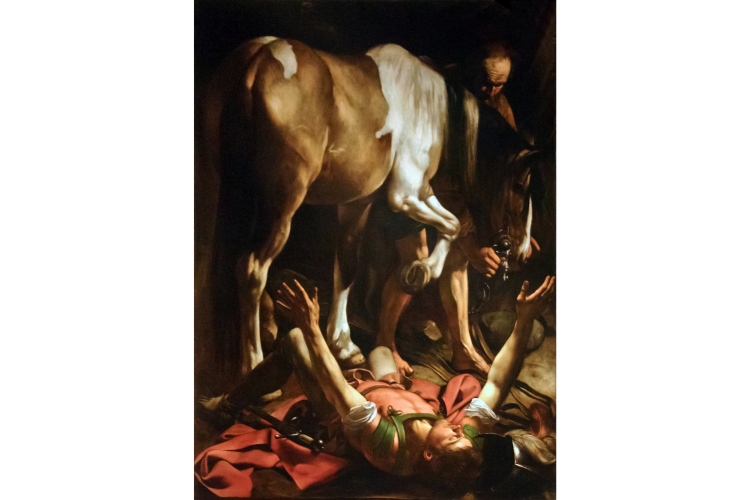
It's hard to determine what Caravaggio’s best painting is, as so much of art is based on subjective preferences. But it is true to say that without Caravaggio paintings, Baroque art's boom would not have been possible. Without Caravaggio, the most famous Dutch Golden Age painters like Rembrandt and Vermeer would not have been able to create their masterpieces. Essentially, a list of some of the most expensive paintings ever sold would look a lot different.
Some of Caravaggio’s most famous works include "Judith Beheading Holofernes," "Young Sick Bacchus," "Calling of St. Matthew," and "Conversion on the Way to Damascus." If you're an aspiring artist, no matter what level of talent and skill you possess, you can gain inspiration by looking at these famous Caravaggio paintings. He might inspire you to learn beginner’s painting techniques and master chiaroscuro or provide you with some creative self-portrait ideas. If you ever get a chance to see one of his approximately 90 remaining masterpieces in real life, you should! It might inspire you to take on a new hobby like painting. If the art bug bites you hard, try exploring art classes near you or give the gift of art with art classes in painting classes in Atlanta, painting classes in NYC or painting classes in Los Angeles to name a few. If you know a budding Caravaggio in the making, it would be a great idea to let them explore their talents with gift cards for artists.
Where can I see Caravaggio paintings in the U.S.?
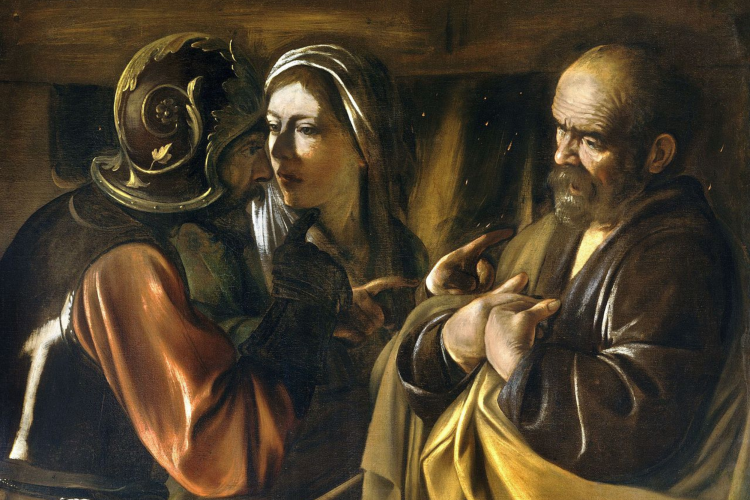
To see the Caravaggio paintings that made him so famous, you’ll need to book a trip to some of the art capitals of Europe. Most of Caravaggio’s works are in Rome, with others in Paris, Madrid, London and the Vatican City. However, there are some Caravaggio masterpieces a little bit closer to home for those living in America.
How many Caravaggio paintings are in the USA?

While the exact number varies due to traveling exhibitions, there are six or so Caravaggio paintings that permanently live in the United States. Visit the Metropolitan Museum of Art in NYC to see "The Musicians" and "The Denial of Saint Peter." For those living in Chicago, visit the Art Institute of Chicago to see "Resurrection" and "Madonna and Child."
Not planning a trip to the Big Apple or the Windy City any time soon? There is one Caravaggio painting on display in Hartford, Connecticut, and his famous work "Cardsharps" can be seen in Dallas, Texas. However, you should check in before visiting any museum or gallery as paintings are loaned to other establishments from time to time.
19 Top Caravaggio Paintings
1. Calling of St. Matthew (1599–1600)

One of the most famous religious Caravaggio paintings, "The Calling of St. Matthew," located in the Contarelli Chapel of the Church of San Luigi dei Francesi in Rome, depicts a moment from the gospels when Jesus called Matthew, a tax collector, to be one of his disciples. One fun fact about this painting is that Caravaggio used an actual tax collector to model as Saint Matthew.
Like most Caravaggio paintings, he uses chiaroscuro to contrast light with dark to create a dramatic scene that seems to come alive from the painting with movement. Caravaggio painted this work in the middle of his career, when his legal troubles had put him in a difficult spot. The painting represents a desire to find light in the middle of darkness. In the Bible, Matthew was redeemed and saved. Perhaps Caravaggio hoped the same thing for himself.
2. Bacchus (1595)

This early oil painting shows a young boy wearing a crown of grape leaves and grapes. He is dressed like the Greek god Bacchus. No one is quite sure who the model for the young boy was, but some art critics have argued that it is an early self-portrait of Caravaggio, something that many of the famous Caravaggio paintings have in common.
3. Medusa (1595 -1598)
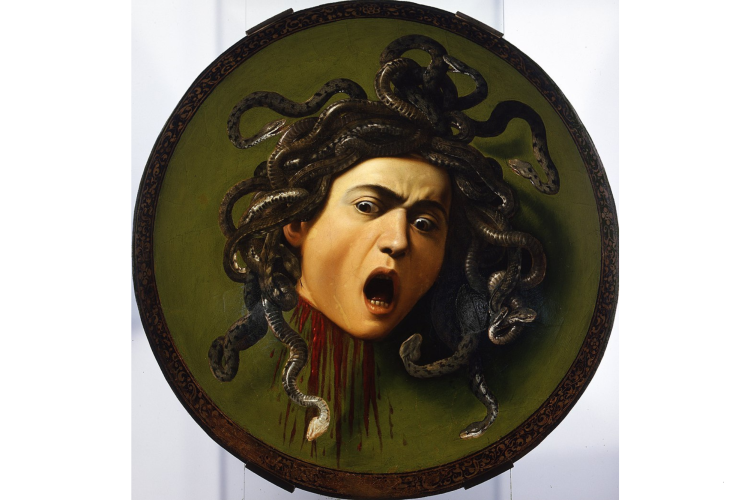
This is one of the more gory Caravaggio paintings and is made from canvas that is stretched over a wooden shield. Caravaggio chose this round shape to represent the moment in the Medusa myth when she was defeated and eventually beheaded. The Greek hero Perseus knew that looking into Medusa’s eyes would turn him to stone, so he instead used his shield as a mirror and killed her by using the reflection on his shield.
Another intriguing fact about this work of art is that many believe the face of Medusa to actually be Caravaggio’s face. They argue that he used a mirror to perfect the angles of the face in reflection. So the head of the Medusa is, in fact, Caravaggio's own.
4. The Conversion of Saint Paul (1600)

One of the many religious Caravaggio paintings on this list, "The Conversion of Saint Paul" was created to be a fixture in the Cerasi Chapel in the Basilica of Santa Maria del Poppolo, a popular stopping point for pilgrims on their way to Rome.
This painting represents Caravaggio’s second attempt at the work, as his patrons did not approve of his first try. In the image, we see St. Paul lying on his back on the road to Damascus after having a supernatural encounter with Jesus. See how Caravaggio masterfully uses angles, body positioning and color to always lead the eye to Saint Paul, who is struck down on the ground. This is a fantastic use of visual emphasis or focal point creation. Paul is blinded by the light of Christ that is cast upon him, which Caravaggio emphasizes by bathing the Saint-to-be in total light.
5. Narcissus (1597 – 1599)

According to mythology, Narcissus was a vain figure who fell in love with his own reflection, rejecting food, drink and the world around him to only gaze upon his own mirrored self. He eventually died beside the river, in unrequited self love. The story, along with the painting, explores themes of duality: light and dark, life and death, love and vanity. This duality is reflected in Caravaggio's almost perfect split between the upper half of the painting and the lower reflection. He uses the knee, bathed in light, as the visual pivot of the painting.
Notice that Narcissus is bathed in light, while his shadow is covered in darkness, quite literally foreshadowing his impending doom. His use of light and dark help to create the story; they are visual elements to assist in guiding emotion. This is another one of the top Caravaggio paintings that shows the artist's work with light and dark, which would become a hallmark of his style over the years. It is not just an image, but a cautionary tale to the viewer on the tragedy of self-obsession and vanity.
6. Salome receives the Head of John the Baptist (1607/1610)

Salome with the Head of John the Baptist (London) is another one of the masterful Caravaggio paintings and is housed in the National Gallery in London. Although created in around 1610 and painted to regain favor with the Grand Master of the Knights of Malta after being expelled from the Order in 1608, this painting was only discovered in 1959 in a private collection. The picture tells the story of Salome, who was granted one wish by her stepfather, King Herod. Her cruel wish was to have the head of John the Baptist served on a platter, a story of revenge, as he criticized King Herod for marrying his brother’s wife, and Salome's mother, Herodias. Caravaggio reduced the story to its bare essentials, using a limited color range to emphasize the cruelty of the story. Salome's exaggerated expression is enigmatic — we aren't sure if she is disgusted or excited.
7. Basket of Fruit (1596)

One of the most Baroque-influenced Caravaggio paintings created earlier in his career, it's a still life that shows a plain basket of fruit, but the colors and composition are purely Caravaggio. Viewers who look closely will notice that there are signs of decay, a move away from the pure and perfect still lives that preceded him. The apple is bruised, the leaves are dried and even the fruit in the basket is covered in what appears to be dust. There is more than meets the eye in this picture-perfect still life. The color palette is somewhat dull and covered in shadow, almost forming a silhouette. Themes of mortality, which are so dominant in Caravaggio's paintings, are evident.
8. David and Goliath (1599)

Caravaggio painted several images that depict the story from the Old Testament of a young man slaying a giant with a single knock to the temple story. This particular one is housed in the Museo del Prado in Madrid. David, a shepherd boy, follows the guidance of God and defeats Goliath, a giant Philistine enemy that threatens Israel. In this early version, David is seen crouching over the body of Goliath in a very personal and private moment — defeating the enemy completely on his own. David fastens his enemy in an almost casual and nonchalant way. His arm and leg, both bathed in light continue the focus on the activity over his face, covered in shadow.
9. The Entombment of Christ (1603-1604)
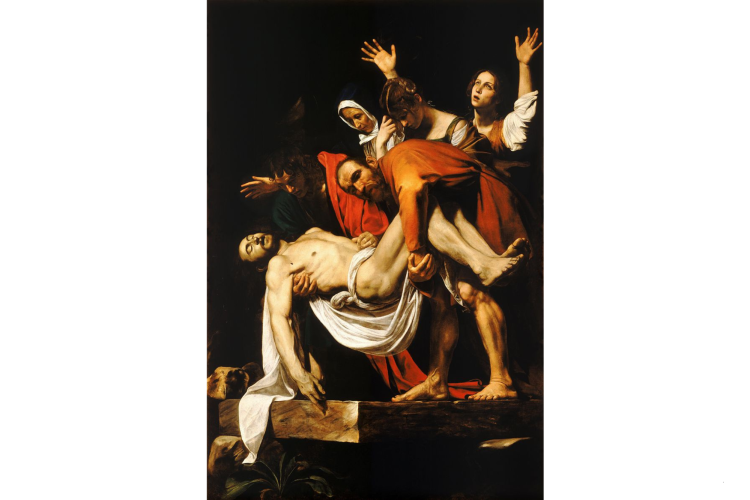
Some may be offended by the top Caravaggio paintings due to their gruesome realism, but this was is one of Caravaggio’s milder religious depictions, making it a popular painting while he was still living. Caravaggio based his work one of Michelangelo's famous artworks, "Madonna della Pietà." In his painting, Caravaggio shows the moment that the Virgin Mary, and other key biblical figures John the Evangelist and Nicodemis (Caravaggio used Michelangelo's face), take Jesus’ lifeless body off the cross and move it to the tomb. Note the diagonal cascading composition and use of light and dark to always draw the eye down to the central figure of Christ, underlined by the flowing white and pure cloth. Interestingly, the various hands point up to the heavens, directly straight and drooped below.
10. Supper at Emmaus (1601)

One of the most famous Caravaggio paintings, this masterpiece currently housed in the National Gallery in London was painted in 1601 and shows another tale from the Bible. "Supper at Emmaus" shows Jesus' miraculous appearance to two of his disciples after his death and resurrection. The almost casual scene shows a youthful Jesus, cast in light, as his disciples' shadows behind him create a stark contrast. Caravaggio seems to have created the exact moment the Jesus appeared as his followers look as if they're almost jumping out of their chairs in disbelief.
11. David with the Head of Goliath (1607)

This is one of the later religious Caravaggio paintings that shows the moment David defeated the giant Goliath. David, a young shepherd boy, stands holding the bloody severed head of Goliath, whose face in this image is actually a self-portrait of the artist himself. A move to the more grusome than the previous version, Caravaggio shows the dangling head of Goliath, dripping with blood. Interestingly, David's sword is inscribed with "H-AS OS" — which is interpreted as the abbreviation of the Latin phrase humilitas occidit superbiam ("humility kills pride"). This humility is displayed in David's reluctant expression, who is not prideful of the fact that he had to kill to save his people.
12. Judith Beheading Holofernes (1598-99)

As we have seen, Caravaggio didn’t shy away from including grotesque images in his body of work. This is one of the major Caravaggio paintings that depict the scene of Judith, who is a figure in the Catholic Bible who killed an enemy general while he was drunk. It is extremely violent, but the violence contrasts with Judith's youthful sexualized femininity. This is a heightened version of what Caravaggio is known for; combining light and dark, sacred and profane, violence and intimacy.
13. The Fortune Teller (1594)

There are two different versions of "The Fortune Teller," but both feature a scene that was probably all too common in Caravaggio’s circles. The girl in the painting appears to be telling the fortune of a boy, but in actuality, she is stealing his ring. This is a perfect example of why Caravaggio paintings are heavily criticized. Instead of depicting perfect, idealized religious images, he shows real life as it is, deceit in the face of purity.
14. The Musicians (1597)

This is one of the earliest Caravaggio paintings showing an allegory — an image with a hidden moral or political meaning. In this case, the image is an allegory representing music as the sustenance of love, just as food is the sustenance of life. The allegorical figure comes out in the fourth musician who is dressed as Cupid (representing love) and reaches for some grapes (representing life).
It was commissioned by Cardinal Francesco Maria del Monte who had an avid interest in music. Instead of showing the musicians in the middle of an emotional performance, Caravaggio shows them rehearsing their works — dirt under their fingernails as they intimately practice in close quarters. There is also a small self-portrait of Caravaggio in this image, which shows that, on some level, Caravaggio related to the musicians’ struggle to perfect their craft.
15. The Incredulity of Saint Thomas (1601-1602)

This is one of the Caravaggio paintings that shows incredible emotions through religious significance. After Jesus was resurrected, he appeared to his disciples. Saint Thomas, commonly referred to as ‘Doubting Thomas’ declared that he wouldn’t believe it was Jesus unless he saw the wounds where he had been crucified. In this masterpiece of chiaroscuro, Jesus guides Thomas’ hands to his wounds. Once again, Caravaggio uses light and dark to portray the divinity and significance of Christ compared to his shadowy doubters.
16. Crucifixion of St. Peter (1600)
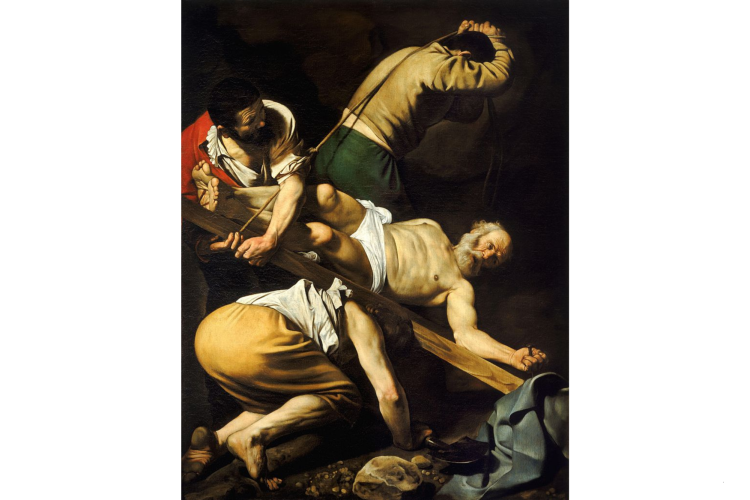
Another religious painting that shows a moment of intense drama is Caravaggio’s painting "Crucifixion of St. Peter." Peter was crucified upside down because he didn't believe that any man could be worthy of being killed in the same way as Christ. Although there is intense emotion in this painting, Peter himself seems very calm in the face of death compared to the struggling executioners. Similar to the other religious Caravaggio paintings, the artist cleverly guides the viewer's eye, using chiaroscuro and positioning, to the brave martyr.
17. The Taking of Christ (1602)

Like "Supper at Emmaus," Caravaggio's famous masterpiece painted in 1601, this religious work showcases Caravaggio’s masterful use of chiaroscuro. In it, we see Judas just after kissing Jesus on the cheek, a sign of betrayal as this was Judas' direction for the Roman army. Judas was the disciple who led the Roman soldiers to arrest Jesus, and this is the moment Caravaggio depicted in this emotional scene.
Caravaggio uses the light on the Roman armor to direct the viewer's attention to a betrayed Jesus, whose shock is highlighted by the fleeing St. John. Catholic viewers of this painting in Caravaggio’s day would have immediately understood that this event ushered in the events of Holy Week, ending with Jesus’ death on the cross and His resurrection from the dead. By far one of the more touching, and less gruesome, Caravaggio paintings, .
18. Young Sick Bacchus (1593)

If we were to list two major Caravaggio paintings, this painting, one of Caravaggio’s earliest, would certainly be on the list. It shows the god of wine and revelry in Roman mythology, Bacchus. Yet the image diverges from the usual rosy-cheeked god being happy and full of revelry to Caravaggio’s sick Bacchus who looks unhealthy, jaundiced and emotionally unwell. This is a different take on Roman mythology and shows something almost sinister in a god who is usually portrayed as feasting and creating rowdy fun. It is believed that Caravaggio himself was ill with malaria around the time of this painting and is believed to have been somewhat of a self-portrait.
19. Sacrifice of Isaac (1603)

Painted at the high point of Caravaggio’s career, this is another one of the Caravaggio paintings that depicts an emotional scene from the Bible, this time from the Old Testament. In the book of Genesis, Abraham was called by God to sacrifice his son, Isaac, as a sign of faith. Caravaggio’s painting shows the crucial moment in the story where God sends an angel to stop Abraham from following through with this deed and instead provides a different sacrifice of a lamb. This is one of Caravaggio’s paintings that had the longest-lasting impact on other Baroque painters, as the use of light and dark, with dramatically enhanced chiaroscuro (also known as tenebrism), is somehow threatening and hopeful at the same time. It's almost as if a spotlight were shining on the angel — the source of God's promise delivered.
20. The Beheading of Saint John the Baptist (1608)
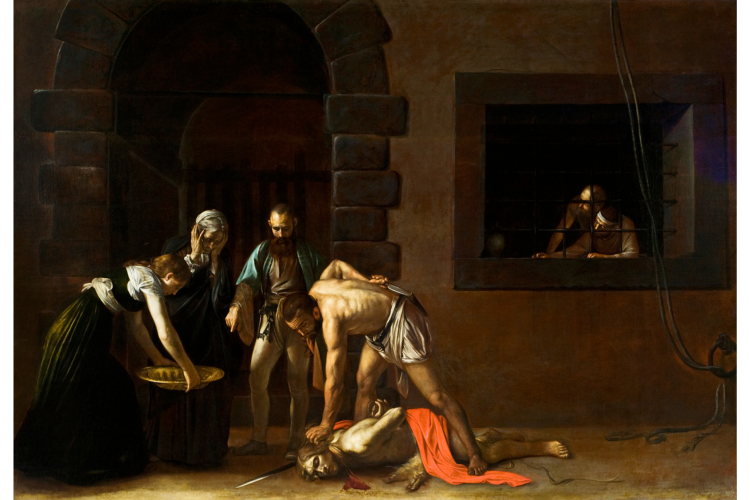
This violent painting of the moment Saint John the Baptist was beheaded is one that holds a special place in Caravaggio’s life story. There is more color than a typical Caravaggio painting, bathed in a warm orange glow with hints of colder blue. There is also an impending use of empty, negative space where the main subjects are clustered to one corner.
One interesting fact is that this is the only painting to ever bear the artist's signature, which is placed in the red blood that oozes from Saint John's neck. The painting was commissioned by the Knights of Malta to be an altarpiece and still hangs in St. John's Co-Cathedral — affiliated with the Knights of Malta.
We hope this guide to the best Caravaggio paintings has given you ideas for your next art project, or simply helped you learn a bit more about this famous Italian painter.
For even more ideas to get you inspired, check out other experiences happening on Classpop!

